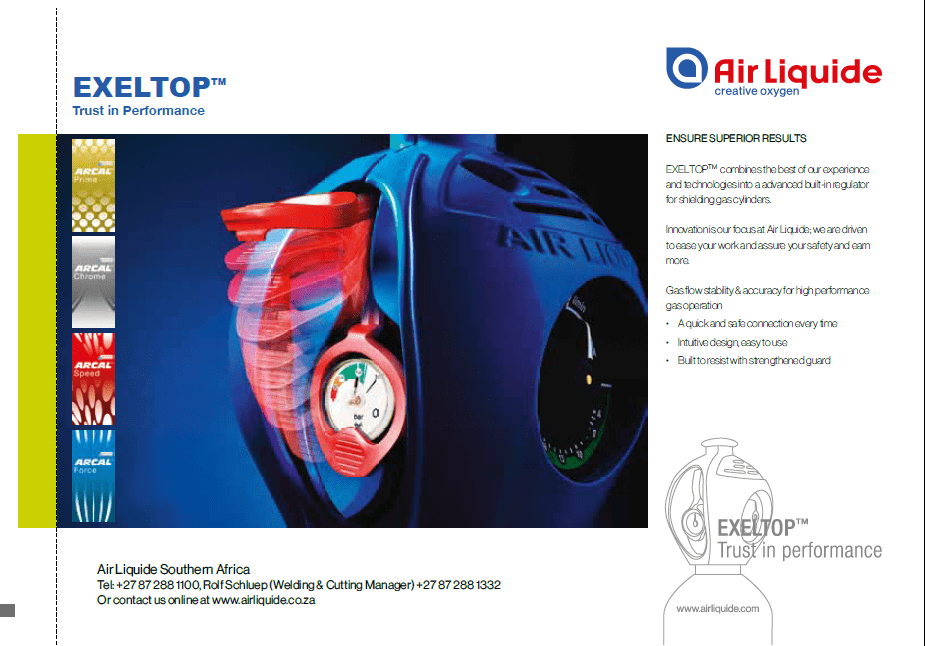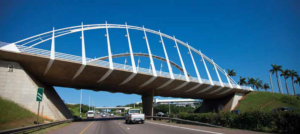 In 1999, the Durban Roads Department decided to build an iconic bridge over the M41 highway in Umhlanga Rocks, named the Millennium Bridge, to celebrate the 21st Century and the new millennium. This bridge is situated approximately 1km from the Umhlanga Rocks shoreline.
In 1999, the Durban Roads Department decided to build an iconic bridge over the M41 highway in Umhlanga Rocks, named the Millennium Bridge, to celebrate the 21st Century and the new millennium. This bridge is situated approximately 1km from the Umhlanga Rocks shoreline.
To ensure its longevity, the architects decided to build the structural components in stainless steel. They used grade 304 structural tubing for the arch and 3CR12 for the vertical spines.
However, as a sacrifice to budgetary restraints, they elected to specify the street level railings in galvanized carbon steel. The entire structure was painted white.
Sassda has revisited this bridge on a few occasions over the past two decades to check on the performance of the stainless steel, and the 3CR12 in particular. The use of 3CR12 stainless steel was novel as it is generally not used for coastal applications. Grade 304 is also not considered as suitable for architectural applications at the coast as other grades, however, it was specified here as it was to be painted. The results of these inspections are a revelation, and an indication that 12% chromium steels can be used in some of the most corrosive atmospheric conditions, if aesthetic considerations are able to be discounted or addressed by painting.
Over the 18 years, regular flaking of the paint on the galvanized railings, due to paint damage and under-film creep, has resulted in significant corrosion, necessitating repainting on two or three occasions. This is shown in figures 1 and 2. The stainless steel components have shown no corrosion whatsoever, even where damage to the paint has occurred.
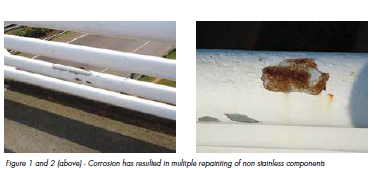
In April 2017, the structure was again revisited. At this point the galvanized railings had just been repainted so no corrosion was visible. However, it was evident that the original paint, used on the stainless steel, had now reached the end of its useful life and it had started to crack and flake off, shown on figure 3.
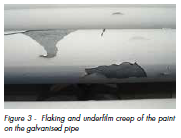
There was no underfilm creep on the stainless steel and even n the 3CR12, where the underlying steel was exposed to the marine atmosphere, no corrosion was evident, shown on figure 4.
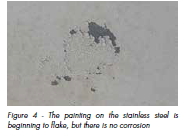
A life cycle costing (LCC) evaluation of the structure will clearly show that the decision to specify stainless steel for the structural components was correct. Repainting of the arch and spires would have required closing the bridge (and possibly the highway below) for several days, and the erection of scaffolding and safety netting for the duration of the repainting process. This would have been necessary on at least two occasions,based on the experience with the road level railings. Figures from other LCC studies have shown that the cost of repainting a complex structure will generally exceed the additional capital cost of the stainless steel in the first occurrence, shown Graph 1.

Clearly a 12% chromium steel, such as 3CR12, is a viable option as it is a cost effective structural steel in highly corrosive coastal environment. However, it must be remembered that 3CR12 has a brown patina and aesthetic considerations must be considered.


